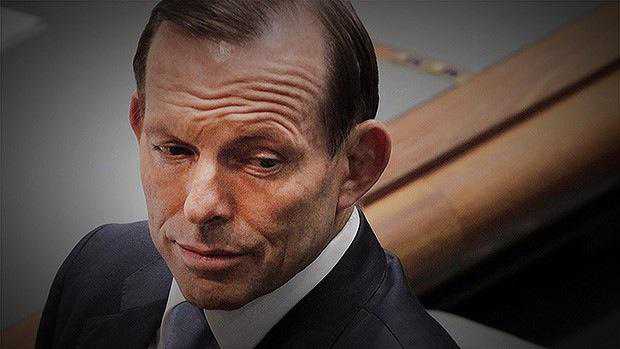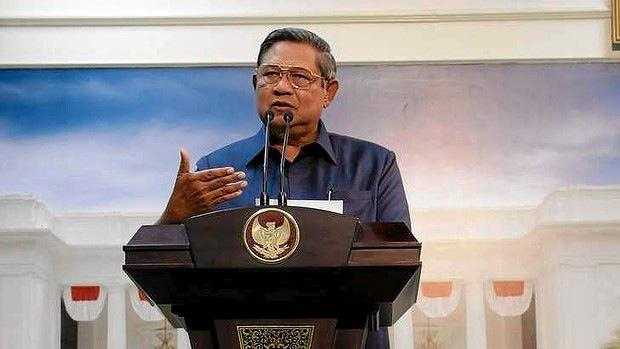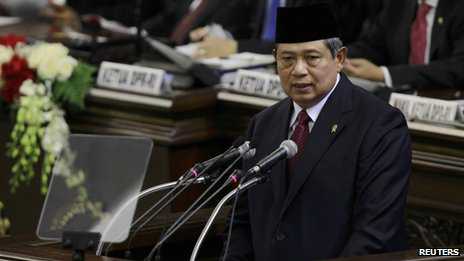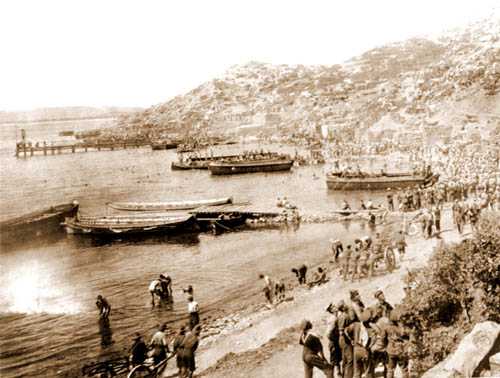
Australia’s asylum-seeker measures in Indonesia have been thrown into disarray with Jakarta pulling the plug on all military co-operation in retaliation for the Abbott government’s refusal to explain the phone tapping of Indonesian President Susilo Bambang Yudhoyono.

God willing, tonight I will send a letter to Tony Abbott demanding Australia’s official stance and explanation … and then we will see what we can do in the future
According to Karuni Rompies and AAP Relations between Canberra and Jakarta have descended to their lowest level since the East Timor crisis as the Indonesian President ordered his country’s troops to stop joint exercises with Australians in Darwin, and the navy to halt any joint patrols to combat people smuggling.
n the latest development, the Australian embassy in Indonesia is bracing for protests outside its offices on Thursday. It is understood that the government will take precautions to ensure the safety of staff at the embassy.
And in the US, Foreign Affairs Minister Julie Bishop, visiting Washington for Ausmin talks, refused on Thursday to discuss intelligence matters. US Secretary of State John Kerry also said that the US did not talk about intelligence matters in public and it wasn’t going to start now.
But opposition foreign affairs spokeswoman Tanya Plibersek accused the Coalition of making ”some injudicious” comments before the September 7 election on asylum seeker policy.
Ms Plibersek said the government could not allow the diplomatic row with Indonesia, over spying claims during Labor’s time in government, to fester, insisting the opposition was committed to helping the government restore the relationship.
But she would not say whether she thought Prime Minister Abbott should pick up the phone and talk to Mr Yudhoyono, a move suggested by Labor leader Bill Shorten.
Cabinet minister Christopher Pyne said that he was confused by Labor’s position.
On the one hand, he said, the opposition was saying it supported everything the government was doing to repair the relationship. ”On the other hand, they’re still trying to play politics on foreign policy,” Mr Pyne said.
Indonesia’s President on Wednesday said: “How can we do all this if we are not sure that there is no tapping of our military, which is working for the interests of the two countries?”
The sudden deterioration in ties sent the Abbott government into crisis talks, with Prime Minister Tony Abbott requesting time to address the House of Representatives at short notice to emphasise his respect for the relationship and his desire to see it repaired.
”I want to express here in this chamber my deep and sincere regret about the embarrassment to the President and to Indonesia that’s been caused by recent media reporting,” he said for the second time that day.
“The President indicated that he would shortly be writing to me. I would like to reassure the House that I will be responding to the President’s letter swiftly, fully and courteously. As always, I am absolutely committed to building the closest possible relationship with Indonesia, because that is overwhelmingly in the interests of both our countries.”
In response, Opposition Leader Bill Shorten described it as a shared problem.
”This is indeed a team Australia moment. This is something that has happened to both Indonesia and Australia. We need to walk this road together. Other nations have resolved these similar issues, we can too,” he said.
Only last month Indonesian defence minister Purnomo Yusgiantoro agreed to deploy his navy’s maritime patrol aircraft to monitor people-smuggling activity along southern coastal areas, and to beef up naval patrols.
An Indonesian navy spokesman confirmed on Wednesday night that these patrols had been suspended, but said the moves would not affect the police force, which provides most of Indonesia’s assistance to Australia on people smuggling.
Dr Yudhoyono said after a crisis meeting at the presidential palace with his foreign minister, co-ordinating minister for security and intelligence chief that the suspension of military co-operation would remain in place until he had obtained “a clear explanation [from Australia] and for Australia to take responsibility”.
“God willing, tonight I will send a letter to Tony Abbott demanding Australia’s official stance and explanation … and then we will see what we can do in the future,” he said.
The explanation should “not be given through the Australian domestic setting”, he added.
The President spoke warmly of the relationship with Australia, but said he had ordered the suspension or review of several areas of co-operation, particularly on information sharing and the exchange of intelligence.
“I have also asked my military to temporarily stop the joint army and navy exercises and also to temporarily stop any co-ordinated military operations, the joint patrols,” he said.
“As you know, the people-smuggling issue has troubled both Indonesia and Australia, so we have co-ordinated military operations or co-ordinated patrols in the ocean, but until this issue is all clear it will be stopped.”
Dr Yudhoyono also called for a binding code of conduct between Australia and Indonesia on co-operation on military, intelligence and people-smuggling issues.
He said the decision by Australia to tap his mobile phone and those of his wife and their inner circle was ”difficult to digest”.
”It is no longer the Cold War era. It was a common thing then to spy on countries of different blocs, but today it is not like that any more. Hostile countries can tap each other, but between Indonesia and Australia we are not of different blocs, let alone hostile each other … why tap a friend, not foe?”
Position expressed via Twitter
Indonesian president Yudhoyono again took to twitter overnight to summarise his position, telling his 4.023 million followers via @SBYudhoyono that he would take three steps “while waiting for an official statement from the Australian Government”.
The first was to wait for “an explanation and for Australia to take responsibility”.
The second was: “A number of agendas for cooperation will be re-examined: the exchange of information, intelligence and training between the Republic of Indonesia and Australia, and the issue of people smuggling”.
The third was to demand a “Necessary protocol, or code of ethics, and guiding principles relating to cooperation in various fields to sustain the relationship the two countries”.
At the same time, there has been an outpouring of anger towards Australia on Twitter. The hashtag #GanyangAustralia , which means “Crush Australia”, has become a popular rallying point for Indonesians to respond to the spy allegations and Australia’s response so far.






